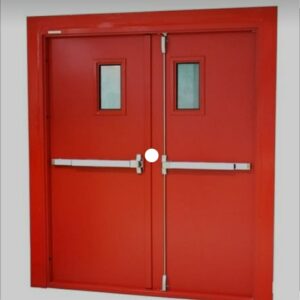Automatic fire alarm systems are activated through fire detectors, such as smoke or heat sensors. Manual fire alarms are activated with manual call points or pull stations. There is no reason for a fire alarm system to exclude one or the other. Both can be included in the same system.
Conventional fire alarms work as one unit and cannot pinpoint the exact area of activation unless inspected. Addressable fire alarms have a specially dedicated address for each fire alarm detector that is connected to the control panel, for easier identification of the source of the danger.
One-stage fire alarm systems warn everyone in the building that a sensor has been activated. Two-stage fire alarm systems warn only certain people who are authorized to take appropriate action before the second stage. This system is designed to serve large public areas (for example, healthcare facilities) to prevent panic and inadequate frightful response.
To determine the most suitable fire alarm system, start by identifying your specific needs. Think about how many detectors need to install in your building. Go for a fire alarm system that is compatible with your current security system. Shop around for equipment that fits within your budget without sacrificing quality. Work closely with the vendor of the fire alarm system to correctly install the fire alarm system and properly integrate it with your existing monitoring and security system.
Give preference to systems that include additional features—such as a hush button, voice alarm and backup battery—to improved usability. If you’re unsure about whether a specific feature of a fire alarm system serves your specific, contact the support of one or more vendors.
It’s also a good idea to contact the fire department and familiarize yourself with relevant fire codes and regulations. Make sure you compare the fire alarm systems offered by various vendors before you decide which one to buy.
Read online reviews from current and previous customers to get a sense of the quality and reliability of the fire alarm systems you are considering. You can also add to your short list of vendors by getting recommendations from friends, family and colleagues who have a well-functioning fire alarm system.
Key Components of a Fire Alarm System
A conventional fire alarm system consists of the following devices:
Fire alarm panel
Detectors and bases
Call points
Sounders and flashers
Power supply accessories (fire alarm batteries)
Wireless fire alarm systems do not use any wiring between the fire control panel and the other devices. Most fire alarms used today are wireless. The most advanced use smart technology, and can be integrated into a smart home with various software applications.
The fire alarm panel (or the fire alarm control panel – FACP) is the base or the control hub of the system. It controls the settings of the other components and communicates the information through the system.
Fire detectors can be heat, smoke or carbon monoxide sensors. They are placed around the building to trace the presence of such emergencies. Some advanced sensors can even detect radiation.
Fire Alarm
A fire alarm is a unit made of several devices, which uses visual and audio signalization to warn people about a possible fire, smoke, or carbon monoxide occurrence in the area of coverage. Fire alarms are usually set in fire alarm systems to provide zonal coverage for residences and commercial buildings. The warning signal is either a loud siren/bell or a flashing light, or it can include both.






Reviews
There are no reviews yet.